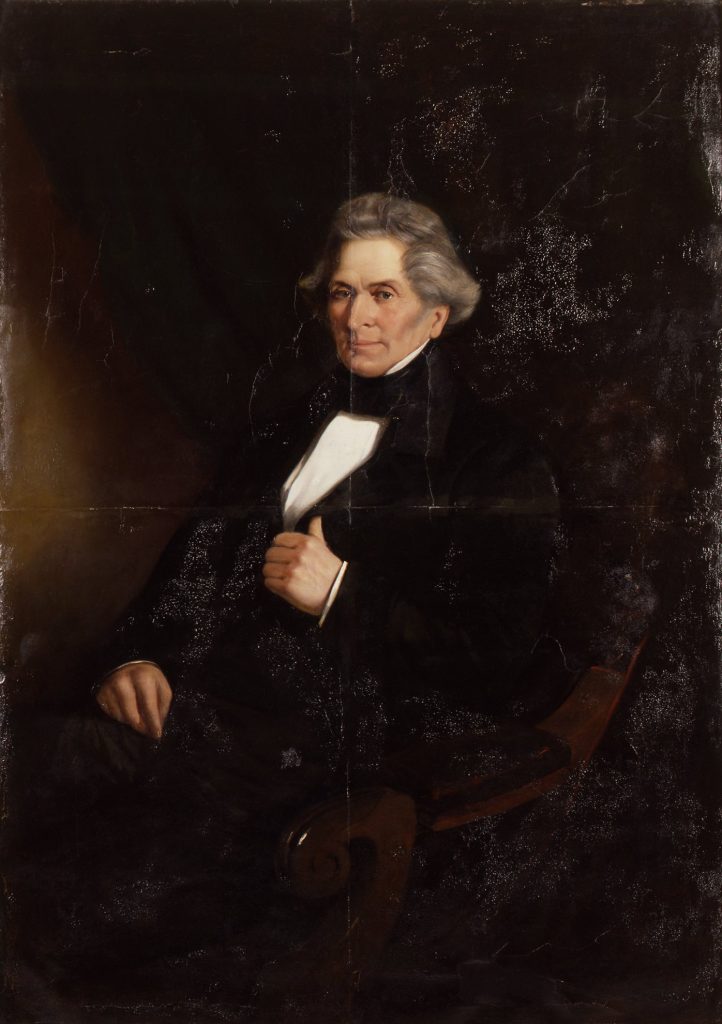Summary
John Aitken (1792-1858) was a Tasmanian pastoralist who, in August 1835, came to inspect the Port Phillip district, and in March 1836 decided to drive his sheep from the Mornington Peninsula to Mount Aitken, north-west of Sunbury. The settlement of Sunbury followed three months later.
Aitken’s greater significance, and no doubt the reason why this portrait was painted through public subscription when he exited the colonies for Home in 1854, was his renown as the best flock-master of the era. Aitken was older than most of the early pastoralists and perhaps this was a factor in his knowledge of sheep. He imported and bred the best Saxon available. In 1842 his sheep won half the awards at the second Melbourne show. From 1845 his annual sale of ‘pure Saxon rams’ attracted scores of buyers eager to improve their stock. One commentator, GA Brown, writing several decades later, was clear on Aitken’s impact on the early industry: ‘The improvement of the merino sheep of the country, prior to the origin of some of the studs of the 1860s, was owing more to John Aitken than any other breeder.’
Francis Frederick Hutton (1826-1859) had come to Australia with his brother in about 1850. In September of that year he went on an expedition to the Murray and Darling Rivers with Sir Henry Fox Young as the accompanying artist. After the expedition Hutton was employed in a government job but was retrenched in 1852. As a direct result of this upheaval Hutton took up painting professionally and moved to Melbourne in 1853 for work.
In 1854 Hutton exhibited five portraits at the Melbourne Exhibition and it is likely, although this is unconfirmed, that the Portrait of Aitken was among them. Council records and letters show that the portrait was painted by public subscription and that it was requested it be hung in the Melbourne Town Hall.
The work was transferred on loan to the State Library of Victoria in 1937 during works to Town Hall and there it stayed until 2000. The State Library conserved the artwork before its return and the following is taken from the conservation report: ‘The basic construction of the painting is similar to other paintings of the period. A stretcher was made from cedar and then the front covered with a lightweight, tabby weave, linen canvas. On top of this was laid four sheets of heavy weight artist paper attached with a thick layer of paste. Surprisingly when the paper was laid down it did not meet at the joins and a gap of 2 to 4mm was left between each sheet.’
